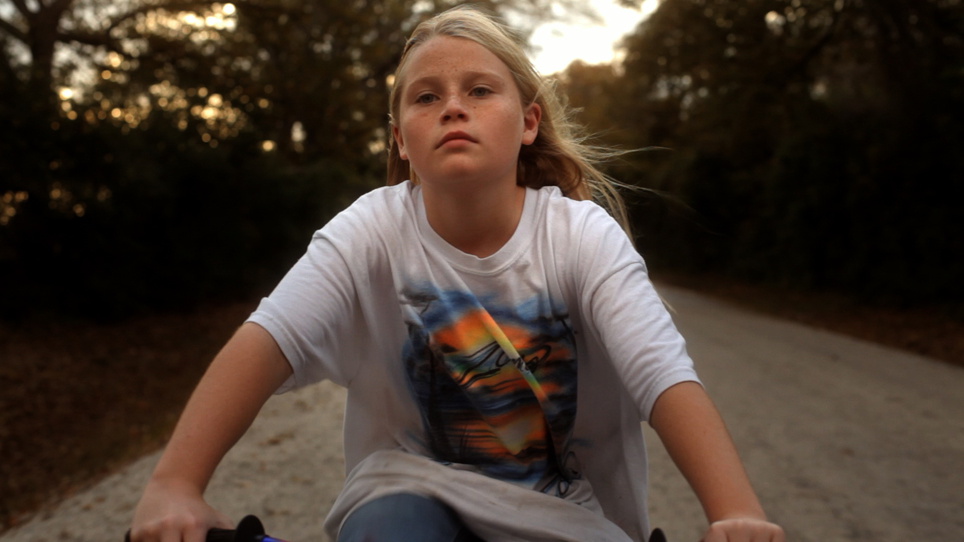Kid-Thing vividly depicts specific, distinctly tactile childhood experiences: hard gummy candies that almost break your teeth off, the strange joy of finding old curios inside a shed, the power in destroying stuff. Director David Zellner taps into these experiences as if he’s trying to evoke a sense of nostalgia for the viewer, underscoring the sensorial impression in discovering new, strange stimuli, like rotting trees, old dust-covered books, and fuzzy worms. This visceral style also makes a broader thematic statement: that there’s a point at which a child’s curiosity and gaining a sense of mastery over his or her world can become a test of morality. Unfortunately,Kid-Thing fails to substantiate any thought-provoking ideas to an otherwise fascinating premise.
Ten-year-old Annie (Sydney Aguirre) is a stern-faced tomboy who, out of boredom and loneliness, steals from corner stores, attacks dead cows and people with a paint gun, makes prank phone calls, and hurls croissant dough at cars. The film makes the tenuous connection between the dangers of the girl’s aimless carousing and her father’s abysmal parenting: During the sparse time that he does spend with her, Marvin (Nathan Zellner) passes out from drinking while Annie plays video games, or teaches her the very important life skill of how to hypnotize a chicken. Zellner is interested in showing the disconnect between father and daughter, but he cheaply turns Marvin into a caricature of low-class Americana, a man who diligently scratches lottery tickets, plays with firecrackers, and is unaware that his daughter is in a soccer league.
The film’s assumption about parentless environments wreaking havoc on a young girl’s moral development raises a larger problem: By making the father a joke, the narrative fails to provide the context necessary to fully validate Annie’s increasingly bizarre actions. When she discovers a woman, Esther (Susan Tyrrell), trapped in a deep pit in the forest, she inexplicably fails to help her. Annie’s first reaction is to flee, as if out of terror, yet there’s no reason for her to be scared of Esther—or the devil, as Annie claims her to be—given the fact that the woman is in no position to hurt her. Annie returns to the pit only out of curiosity, to ask Esther if someone put her in there for a reason. The girl’s behavior is practically sociopathic, except that she later brings Esther sandwiches, juice boxes, and a walkie talkie in order to keep track of her well-being.
As those items don’t make a sound when Annie flings them into the pit, and the film hints that Esther is only a voice in the girl’s head, the woman becomes a metaphor of sorts for Marvin’s negligent parenting, which has literally and figuratively trapped Annie both within this unforgiving world and inside her own mind. With its sharp sound design, claustrophobic score (by the Octopus Project), and colorful compositions, Kid-Thing envelops the viewer in an otherworldly, hypnagogic reality that’s at once beautiful and frightening. But Annie’s moral predicament with Esther and the pit becomes a muddle of confused symbolism and trite psychoanalysis.

